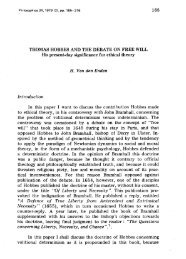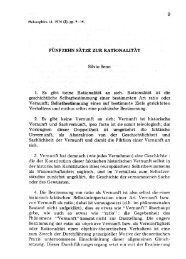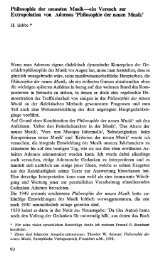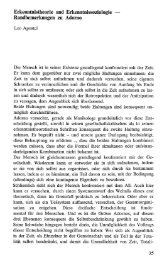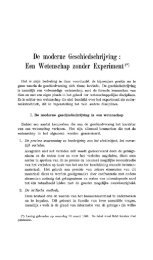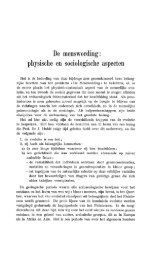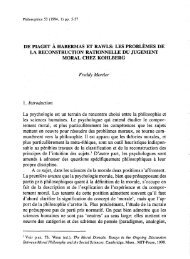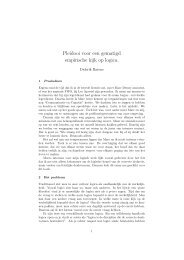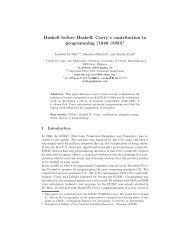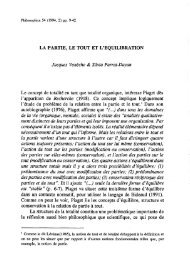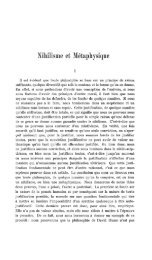CHEZ FERMAT A.D. 1637' Erkka Maula and Eero Kasanen Abstract ...
CHEZ FERMAT A.D. 1637' Erkka Maula and Eero Kasanen Abstract ...
CHEZ FERMAT A.D. 1637' Erkka Maula and Eero Kasanen Abstract ...
Create successful ePaper yourself
Turn your PDF publications into a flip-book with our unique Google optimized e-Paper software.
156 ERKKA MAULA & EERO KASANEN<br />
tian <strong>and</strong> four dimensions were needed for the new numbers. As<br />
Kline puts it, geometric hindsight can show us that the rotation<br />
<strong>and</strong> the stretching or contraction of a given vector in physical<br />
space requires four parameters; three angles <strong>and</strong> a stretching<br />
factor. More formally, Frobenius has proved thst "the only linear<br />
associative algebras with real coefficients (of the primary units),<br />
with a finite number of primary units, a unit element for multiplication,<br />
<strong>and</strong> obeying the product law are those of the resl<br />
numbers, lhe complex numbers <strong>and</strong> real quaternions" (cf. Morris<br />
Kline 1972:779,793). Nevertheless, triples' of integers are flexible<br />
in other respects. Although three-dimensional vectors are used<br />
in the vector analysis of modern physics or in mathematics as a<br />
special case of a n-dimensional linear algebra, it seems that the<br />
study of triangular numbers as separate entities has been<br />
sidestepped because of the historical process that led to the<br />
physics-orienled quaternions. Second, interpreted as integerside<br />
triangles, they constituted Fermat's ontology of mathematics.<br />
Their metamorphosis into furca crosses we have barely<br />
alluded to (cf. Fig.3).<br />
There is no need to dwell on the ancestry of mathematical<br />
atomism (at times distinguished from, at times merging together<br />
with, physical atomism). It may be recalled, however, that a very<br />
eloquent prologue was given in Zeno's "Stadion" <strong>and</strong> "Flying<br />
Arrow". In the subsequent dialogue, atoms or indivisibles were<br />
made use of in many ways by men like Democritus, Plato,<br />
Aristotle, Archimedes, Heron, Oresme, Nicholas of Cusa, Galileo,<br />
Kepler, Pascal, Huygens, Cavalieri, Torricelli <strong>and</strong> Roberval besides<br />
Fermat. With sorne notable exceptions, like Kronecker,<br />
atomism is rejected in modern analysis; its kingdom is number<br />
theory.<br />
It is worthwhile, however, to get rid of a misunderst<strong>and</strong>ing<br />
as to Fermat's use of the auxiliary variable E. In his method of<br />
the maxima <strong>and</strong> minima, Fermat's procedure is aImost precisely<br />
the same now employed in the differential calculus, except that<br />
dx is substituted for E. No wonder, therefore, that Fermat's<br />
argument for his method is at times interpreted in terms of the<br />
limit concept (sa that E becomes a variable quantity approaching<br />
zero; cf. for instance Duhamel's (1864) "Mémoire sur la méthode<br />
des maxima et minima de Fermat, et sur les méthodes des tangentes<br />
de Fermat et Descartes"). A much more reasonable interpretation<br />
is,. however, that Fermat let E vanish in the sense of<br />
actually being zero (cf. Tannery 1902:344; Wallner 1904:122-123;<br />
Boyer 1949:154 ff.). We have adopted this interpretation<br />
throughout. For firstly, in so doing we need not ascribe to<br />
Fermat advanced notions not corroborated by his own words.



